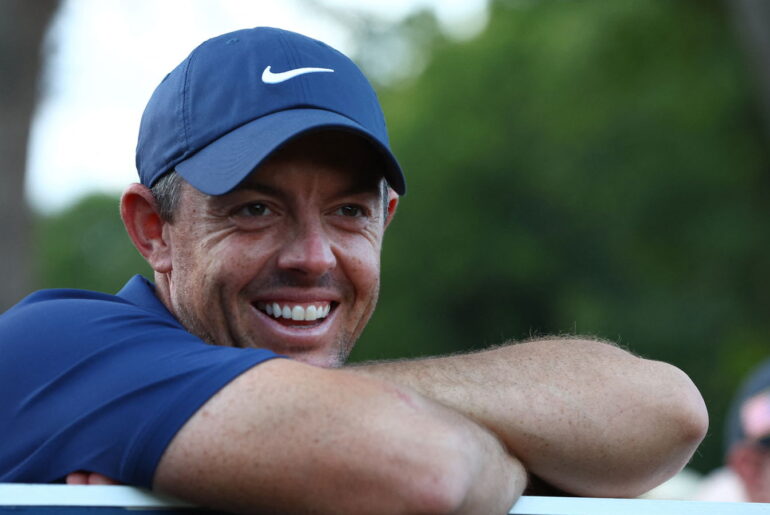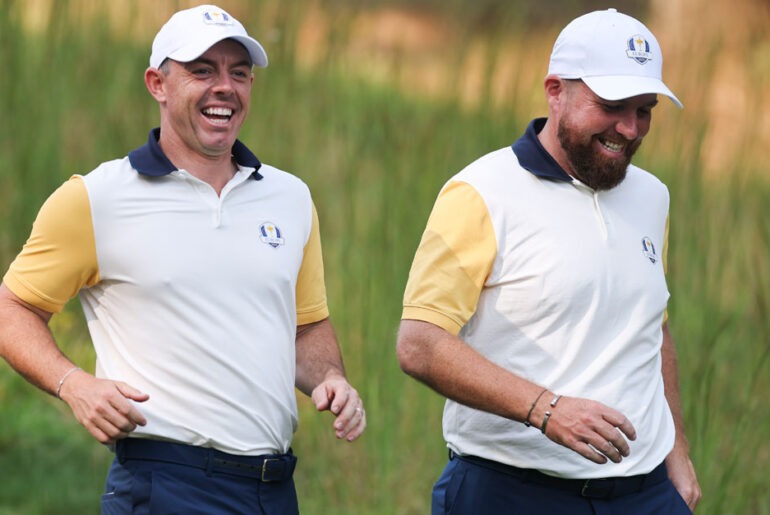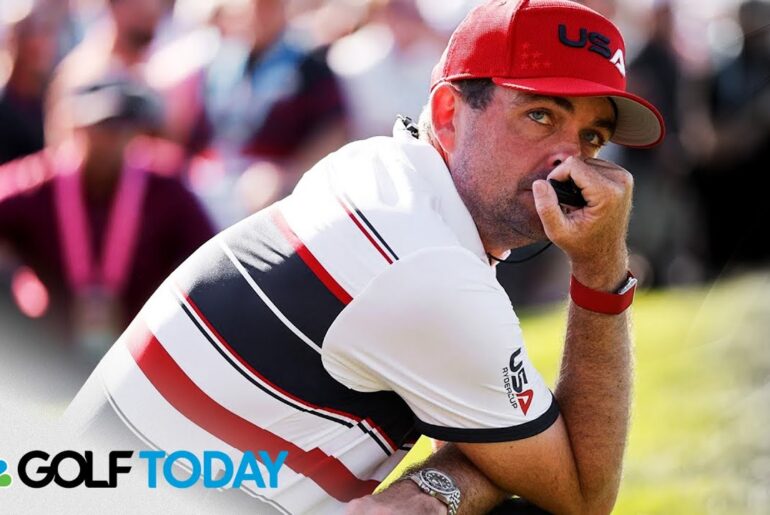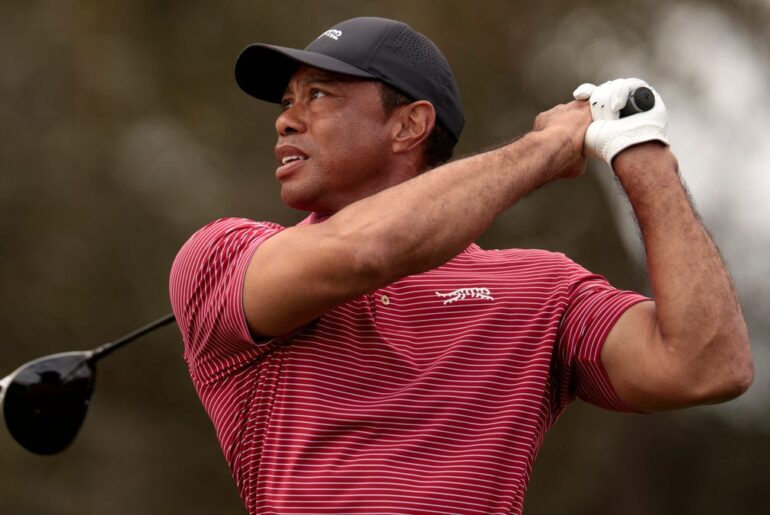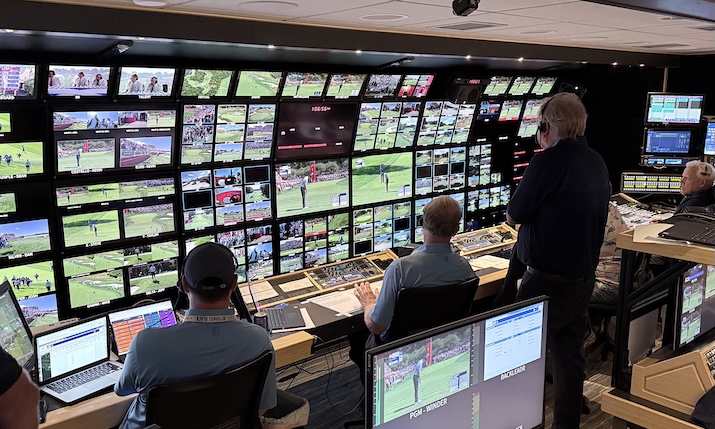
NBC produced the world feed for this year’s Ryder Cup
Okay. Have all our nerves recovered from watching the final day of the 2025 Ryder Cup? A win for Team Europe never in doubt? And Shane Lowry was always going to make that putt to gain the winning half point, wasn’t he? Hmm….
However you watched the conclusion of the event, whether with full confidence in a victory for Europe or through your fingers, what can’t be denied is that yet again golf’s premier competition delivered a televisual spectacular. And what also can’t be denied is that the TV coverage relied upon robust and reliable wired and wireless networks, managed by engineers who went about their task as nervelessly as County Offaly’s finest did in sinking his winning shot.
The event has based its network on technology from Hewlett Packard Enterprises (HPE) since 2018, when the Ryder Cup was held in Paris. The relationship accelerated in 2023 in Rome when HPE provided greatly expanded coverage and enhanced fan and staff experiences based on an integrated private 5G and WiFi network on what was then an unprecedented scale, offering a personalised, immersive experience driven by rich content. User and network owner demands were noticeably greater in 2025 when the network had to satisfy not just broadcasters and media but also up to 250,000 expected fans over the weekend.
For James Robertson, HPE VP CTO industrial strategy and CTO of media, entertainment, hospitality and sports, the table stakes at this point are just building a network and what was delivered for the Ryder Cup was probably one of the largest temporary networks in the world. “[We had] 1,500 acres of a golf course that we covered from end-to-end, edge-to-edge with coverage for WiFi. And then we said, if networking is table stakes, how do we go to that next level? What can we do to elevate the experience even more? And that’s really where we bring in AI and data,” he explains.
The need for AI was clear. The job in hand involved supporting multi-faceted demands from all stakeholders involved in the event. Retail, operations, security, safety and of course media and broadcast. The network itself comprised 170 CX switches; 650 WiFi 6E access points; 25 user experience insight sensors; a three-node private 5G network; 67 AI-enabled cameras; and the HPE Aruba Networking Central management system. From a video production perspective, the course had to accommodate as many as around 50 outside broadcast trucks in the packed TV compound and the 2025 event saw significantly more use of wireless broadcast equipment across the course compared with previous years.
Another core role of the network and AI analytics was to realise immediate value and utilisation of tournament content. AI use cases included the ability to gain knowledge on network utilisation, bandwidth thresholds and the ability to maximise network performance insights. Indeed, the Ryder Cup organisers aimed for accelerated outcomes from the AI-powered network right through from concept to production.
HPE built for the Ryder Cup team a real-time dashboard that could not only track crowd flow, wait times, sales and weather but also monitor live data feeds from the HPE network, including video streams. A video search, summarisation and statistics assistant – using an engine built on NVIDIA blueprint, running on HPE Private Cloud Al – allowed users to seek out any Ryder Cup and PGA video instantly, by player, hole or by moment. It also had an Al tool that could find highlights by searching and summarising Ryder Cup footage using natural language processing. The key benefit was reduced time spent manually reviewing video archives.
The on-course video coverage relied heavily on data. Just over 30 radar devices were used on course to track shots made down fairways, generating around 50 million data points over the course of the three days. Traces of each shot made were added to the video feed displayed on 25 video boards dotted around the course estate. This is said to have been the largest deployment of video boards of its kind.
Drilling deeper into how the network was used by the TV companies, Roberston notes that the broadcasters were riding on the WiFi infrastructure, plugging into the switches when they needed to obtain connectivity and capacity. An around-the-course optical fibre network supported backhaul from cameras and anything else around the course in terms of communication needs being handled. A crucial element of this, he says, was frequency coordination, given there were many sources of wireless communication being used simultaneously.
“[We had] to do frequency coordination on that. We found out, particularly during the Super Bowl, that a lot of cameras now use 6GHz, and so we had to work with the camera operators and camera owners and manufacturers to understand what part of that spectrum they were using so we could reserve it and make sure that it didn’t conflict,” he adds. “That’s frequency coordination: it’s imperative at an event like this because you’ve got everything from two-way radios going on to communication with TV. The last thing you want is for one of those mission-critical signals to go down.”
Another essential element of the HPE set up was to use agentic AI capabilities to diagnose problems before they occurred. “[We needed to see network traffic] data in advance and to sort [a problem] before it happened and basically being in the mindset that, if something really goes wrong, we just swap it out. You don’t have time to diagnose and fix it. We just swap it out and keep going.” This is where the cool heads of the network engineers came very much to the fore to maintain operations. Potential problems were highlighted by AI-based network monitoring in their comms centre and fixed before they became issues.
Roberston says the broadcast industry at large, not just the broadcasters on the course, are buying into AI and examining how it can be applied to improve production workflows. Having started his career with CNN, he stresses the new reality of sports events broadcast and the growing importance of traditional IT and network tools in tomorrow’s media workflows.
“In terms of directly working with broadcasters, everyone’s got their own workstream, and we will be a supporting cast member if they say we need something from you,” he says. “But, on the most part, the broadcast networks are going to do what the broadcast networks want to do, and we will help them wherever we can in terms of base infrastructure. Years ago, when I was working [at CNN], I had a reporter who was literally taking pictures at the Masters and then driving his film from Augusta on memory card back to Atlanta to use the network to upload them. Right now, there’s just an expectation that everything happens on site. When a picture is taken, it’s automatically available on TV, on companion apps. The video needs to be available as soon as possible for the fans, for whatever use.”
With the dust now settled, the Ryder Cup management team and HPE will take stock of the lessons learned at Bethpage Black and look towards Limerick for 2027. A number of things will be certain in Ireland: massive demand for an event which will need to satisfy increased demands on course and on screen, and which in both cases will be fulfilled by an agentic AI network.



